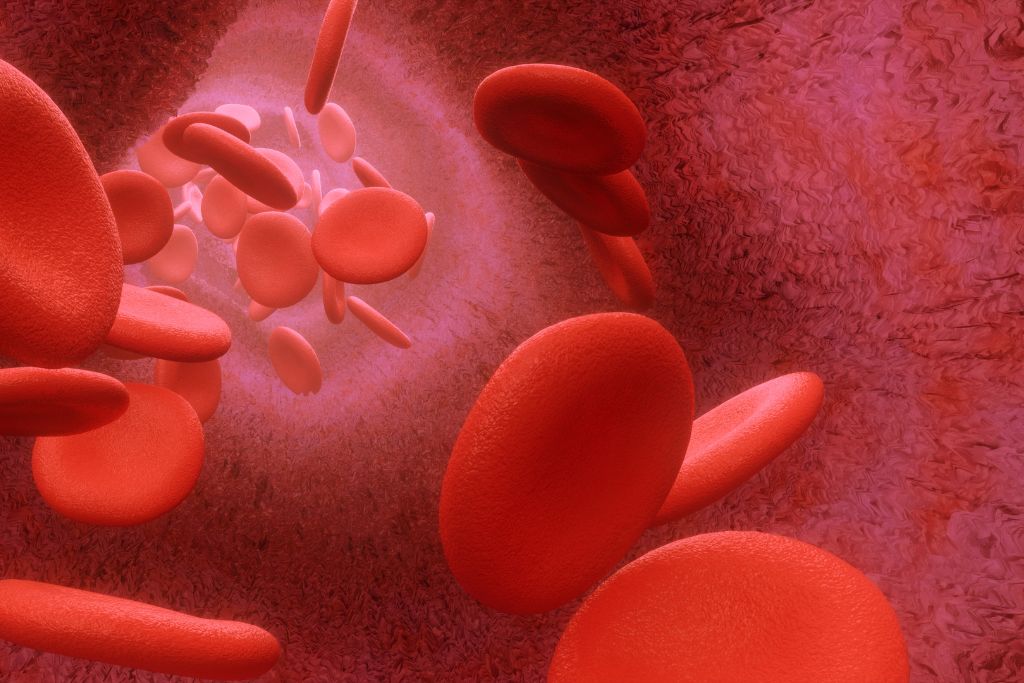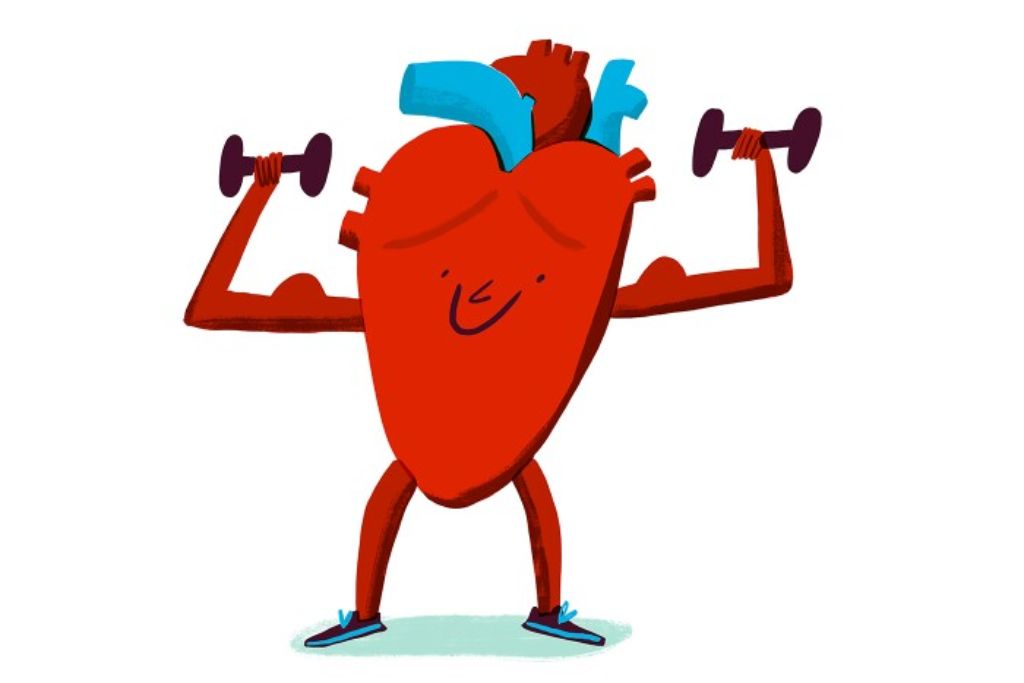Are you looking to give your heart the workout it deserves? Look no further because we’ve got just what you need! In this blog post, we’ll be sharing the top exercises that will keep your ticker in tip-top shape. Whether you’re a gym enthusiast or prefer working out at home, these heart-pumping activities are sure to get your blood flowing and leave you feeling energized. So grab your sneakers and let’s dive into the best exercises for a healthy and happy heart!
Importance of exercise for heart health
Exercise is crucial for maintaining a healthy heart. In fact, it plays a major role in preventing and managing heart disease. According to the American Heart Association, regular physical activity can significantly lower your risk of developing cardiovascular diseases such as heart attack, stroke, and high blood pressure. Furthermore, incorporating exercise into your daily routine can also improve your overall quality of life.

The heart is an essential organ responsible for pumping blood and oxygen throughout the body. It requires a steady supply of nutrients and oxygen to function properly. When we exercise, our heart rate increases, causing more blood to flow through our body. This increased circulation supplies the heart with the necessary nutrients and oxygen it needs to stay healthy.
Regular exercise has been shown to have numerous benefits for heart health. Firstly, it helps maintain a healthy weight or aids in weight loss. Being overweight or obese is a significant risk factor for developing heart disease, as it puts extra strain on the heart’s functioning. By engaging in physical activity, you can reduce excess body fat and maintain a healthy weight.
Moreover, exercise helps strengthen the muscles of the cardiovascular system, including the heart itself, which allows it to pump more efficiently with less effort. This decreases the resting pulse rate and reduces blood pressure, both of which are vital factors in keeping your cardiovascular system healthy.
In addition to these physical benefits, regular exercise also positively impacts our mental well-being by reducing stress levels and improving mood. High-stress levels can increase blood
Understanding the link between physical activity and heart health

Physical activity plays a significant role in maintaining heart health. Research has shown that regular exercise is essential for reducing the risk of developing cardiovascular diseases, such as heart attacks, strokes, and high blood pressure. In this section, we will explore the link between physical activity and heart health in detail.
How does physical activity affect your heart?
When you engage in physical activities like running, cycling, swimming, or any other form of exercise, your body requires more oxygen to meet the increased demand for energy. To fulfill this need, your heart pumps faster and harder to supply oxygen-rich blood to all parts of your body. This leads to an increase in heart rate and blood flow.
Regular physical activity strengthens the muscles of your heart, allowing it to pump more efficiently with less effort. It also helps to lower resting heart rate and blood pressure by improving the elasticity of blood vessels. As a result, there is a reduced strain on the walls of arteries and veins, lowering the risk of damage or blockages.
Benefits of physical activity for heart health
Lowers the risk of cardiovascular diseases: Regular physical activity can significantly lower the likelihood of developing coronary artery disease (CAD), which results from plaque buildup in the arteries and restricts blood flow. Exercise helps prevent plaque from accumulating by decreasing bad cholesterol levels (LDL) while increasing good cholesterol (HDL).
Improves overall cardiovascular function: By engaging in aerobic exercises like jogging or swimming regularly, you can improve your overall cardiovascular function. This
The top exercises for a healthy heart
When it comes to keeping your heart healthy, regular exercise is key. Regular physical activity can help improve heart health by strengthening the heart muscle, reducing blood pressure, and improving circulation. Additionally, exercise can also help maintain a healthy weight and reduce the risk of other health conditions such as diabetes and high cholesterol.

But with so many different types of exercises out there, it can be overwhelming to know which ones are best for your heart. Here are the top exercises that have been proven to keep your heart in tip-top shape:
Cardiovascular Exercise: Cardiovascular or aerobic exercise is any type of physical activity that raises your heart rate and gets you to breathe harder. This includes activities like jogging, swimming, cycling, dancing, and even brisk walking. These types of exercises work your large muscle groups and increase your breathing rate, which helps improve circulation and oxygen flow throughout the body.
To get the most benefit for your heart health, aim for at least 30 minutes of moderate-intensity cardiovascular exercise five days a week or 25 minutes of vigorous activity three days a week.
Strength Training: While cardio may seem like the obvious choice for keeping your heart healthy, strength training should not be overlooked either. Building muscle mass helps reduce body fat percentage, which in turn reduces strain on the heart while also increasing metabolism.
Strength training doesn’t necessarily mean lifting heavy weights at the gym; it can include body-weight exercises such as push-ups, squats, lunges, planks, and more. Aim
Cardiovascular exercises (running, cycling, swimming)
Cardiovascular exercises, also known as aerobic exercises, are activities that increase your heart rate and breathing rate for a sustained period of time. These types of exercises are essential for maintaining a healthy heart and overall physical fitness. In this section, we will discuss the top cardiovascular exercises—running, cycling, and swimming—and their benefits for keeping your heart in tip-top shape.

Running: Running is one of the most popular forms of cardiovascular exercise. It is an excellent way to improve your overall health and keep your heart strong. Running can be done almost anywhere without any special equipment or gym membership. All you need is a good pair of running shoes and some open space.
Benefits:
Strengthens the Heart: Running increases your heart rate, which strengthens your heart muscle over time.
Improves Blood Circulation: The increased blood flow during running improves circulation throughout the body, delivering more oxygen and nutrients to vital organs.
Burns calories: Running is an effective way to burn calories and maintain a healthy weight.
Reduces Risk of Cardiovascular Diseases: Regular running has been shown to decrease the risk of coronary artery disease, stroke, and other heart-related conditions.
Boosts Mental Health: Running releases endorphins in the brain that promote feelings of happiness and reduce stress levels.
Tips:
Start slow. If you’re new to running or haven’t exercised in a while, start with shorter distances at a slower pace before gradually increasing speed and distance.
Strength training (weightlifting, resistance band workouts)
Strength training, also known as resistance training, is a form of exercise that focuses on building and maintaining muscular strength and endurance. It involves using external resistance, such as weights or resistance bands, to work against the muscles, thus causing them to adapt and grow stronger.

Weightlifting is one of the most popular forms of strength training. It involves lifting weights in various forms, including dumbbells, barbells, kettlebells, or weight machines. The main goal of weightlifting is to increase muscle mass and overall strength. This type of exercise can be done in a gym setting with traditional weightlifting equipment or at home with improvised objects such as water bottles or cans.
Resistance band workouts are another effective way to incorporate strength training into your fitness routine. Resistance bands are elastic bands that come in various levels of resistance, making them suitable for people at different fitness levels. These bands can provide an intense full-body workout by targeting specific muscle groups and mimicking the movements used in weightlifting exercises.
One major benefit of incorporating strength training into your fitness routine is its positive impact on heart health. Studies have shown that regular resistance training can lower blood pressure and improve cardiovascular function by increasing blood flow and oxygen delivery to the heart. This increased blood flow helps reduce the risk of heart disease and stroke by strengthening the heart muscle itself.
In addition to its cardiovascular benefits, strength training also plays a crucial role in improving overall physical health and preventing injuries. As we age, our muscles naturally weaken if they are not challenged regularly
How these exercises benefit the heart
Regular exercise is crucial for maintaining a healthy heart and preventing cardiovascular diseases. In this section, we will discuss how the top exercises recommended by experts can benefit your heart.

Cardiovascular Endurance: The first and most obvious benefit of these exercises is improving cardiovascular endurance. This refers to the ability of your heart and lungs to provide oxygen-rich blood to your muscles during physical activity. By regularly engaging in activities like running, cycling, or swimming, you can improve your overall stamina and endurance.
Strengthening the Heart Muscle: When you participate in aerobic exercises such as jogging, brisk walking, or dancing, it causes an increase in your heart rate and breathing rate. As a result, your heart muscle gets stronger over time. A strong heart can pump more blood with less effort, which means that it does not have to work as hard to meet the body’s demand for oxygenated blood.
Lower Blood Pressure: High blood pressure is often referred to as the “silent killer” because it has no symptoms but increases the risk of heart disease and stroke significantly. Regular exercise helps lower blood pressure by keeping the arteries flexible, reducing plaque buildup, and decreasing stress hormones in the body.
Improved Cholesterol Levels: Cholesterol is a fatty substance that naturally occurs in our bodies, but can become harmful when there is too much of it present in our bloodstream. High levels of cholesterol can lead to blockages in our arteries and increase the risk of a heart attack or stroke. Aerobic
Improved blood flow and oxygen delivery
One of the key benefits of regular exercise is its ability to improve blood flow and oxygen delivery throughout the body. This not only has a positive impact on overall health, but it also plays a crucial role in maintaining a healthy heart.
When we engage in physical activity, our muscles need more oxygen to produce energy. This increased demand for oxygen triggers our heart to pump harder and faster, which in turn increases blood flow throughout the body. As a result, more oxygen-rich blood is delivered to our muscles, organs, and tissues.

Improved blood flow means that all parts of the body receive an adequate supply of essential nutrients and oxygen. This is particularly beneficial for the heart, as it relies heavily on a steady supply of oxygen to function efficiently. Regular exercise helps strengthen the heart muscle, making it more efficient at pumping blood throughout the body.
In addition to providing vital nutrients and oxygen, improved blood flow also helps remove waste products such as carbon dioxide from our cells. This process keeps our bodies functioning properly and helps prevent the buildup of toxins that can cause harm if left unchecked.
Exercise also helps promote healthy arteries by increasing their flexibility and reducing plaque buildup. Plaque buildup in arteries can lead to restricted blood flow, which can increase the risk of developing cardiovascular diseases such as coronary artery disease or stroke. By keeping our arteries flexible and clear from blockages through regular exercise, we can reduce this risk significantly.
Moreover, regular exercise has been shown to increase the production of nitric oxide.
Strengthening of heart muscles
Regular exercise is one of the key factors in maintaining a healthy heart. Not only does it help to control your weight and reduce the risk of developing other health conditions, but it also strengthens your heart muscles. The stronger your heart muscles are, the more efficiently they can pump blood throughout your body, keeping you energized and active.

Here are some top exercises that specifically target the strengthening of the heart muscles:
Aerobic Exercises: Also known as cardio exercises, these are any activities that increase your heart rate and make you breathe harder. Some examples include running, swimming, cycling, dancing, or playing sports like tennis or basketball. These exercises work on strengthening your heart muscles and improving their endurance.
Resistance Training: Lifting weights or using resistance bands helps to build muscle strength and endurance in various parts of the body, including the heart muscle. By gradually challenging your muscles with heavier weights or increasing repetitions, you can effectively strengthen your heart over time.
High-intensity interval training (HIIT) entails brief bursts of intense activity and then rest or lower-intensity exercise. This type of workout has been shown to be highly effective at improving cardiovascular health and strengthening the heart muscles.
Yoga: While yoga may not seem like an intense workout for strengthening the heart muscle, certain poses, such as plank pose and downward-facing dog, work on building core strength, which ultimately supports the healthy functioning of the cardiovascular system.
Swimming: Swimming is a low
Lowering of blood pressure and cholesterol levels
Lowering blood pressure and cholesterol levels are two key ways to keep your heart in tip-top shape. High blood pressure (hypertension) and high cholesterol can significantly increase the risk of developing heart disease, stroke, and other cardiovascular issues. Fortunately, regular exercise has been shown to effectively lower both blood pressure and cholesterol levels.

When it comes to lowering blood pressure, aerobic exercises are highly recommended. These types of exercises involve continuous movement that increases the heart rate and breathing. Examples of aerobic exercises include jogging, cycling, swimming, dancing, and brisk walking. Engaging in these activities for at least 30 minutes a day on most days of the week can help reduce blood pressure by 5-8 mmHg.
Resistance training is also beneficial for lowering blood pressure. This type of exercise involves working against resistance to build strength in muscles throughout the body. It can be done using weights, resistance bands, or even body-weight exercises like push-ups and squats. Studies have shown that incorporating regular resistance training into your workout routine can result in a reduction of 3–4 mmHg in systolic blood pressure (the top number) and 2–3 mmHg in diastolic blood pressure (the bottom number).
In addition to lowering blood pressure, exercise is also effective in reducing cholesterol levels. Cholesterol is a waxy substance found in your bloodstream that helps with various bodily processes, but can cause problems when there is too much of it present. There are two types of cholesterol




